The diploma thesis of Heidi Kaproulia entitled “Reactivations : an amphibious installation in Eleysis gulf” was presented in June 2018 at the Department of Architecture of University of Thessaly and was supervised by Professor Zissis Kotionis. -text by the author
How can we treat the sea as a new topography?
This master thesis, through the exploration of the current state of the gulf of Elefsis, attempts, through hypotheses, appeals and actions, to reactivate part of the total activity and productivity of the area of the gulf, through the installation of multiple structures on the sea.
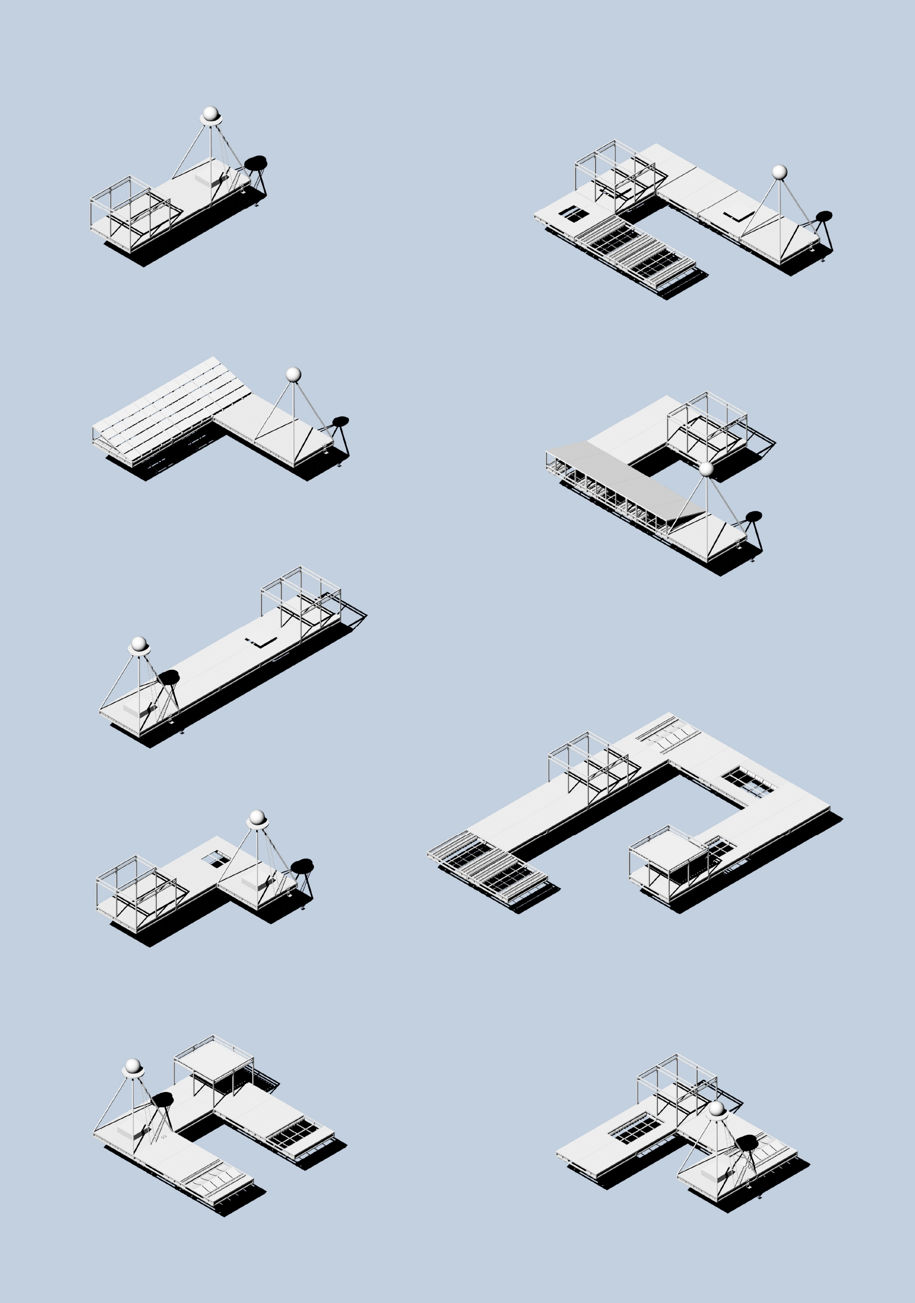
The footprint of human activity on earth has mostly been seen during the last century. The Anthropocene era marks the end of the Holocene era, and human became a considerable geological factor. Both land and marine environments have been strongly influenced by human intervention. Water is familiar to man before it was born, but its deviation from nature has shaped his fear against it.
We tend to believe that all the seas are similar to those of our summer memories, lush and shady, under the sun. But according to Bachelard, almost every sea is violent, and for those who cross it and choose to live nearby, life is a continuous struggle.
The gulf of Elefsis, which is examined in this thesis, could be considered as a violent sea. The industrial zone created on the adjacent front of the bay, was developed on top of the antiquities and next to the dwellings.
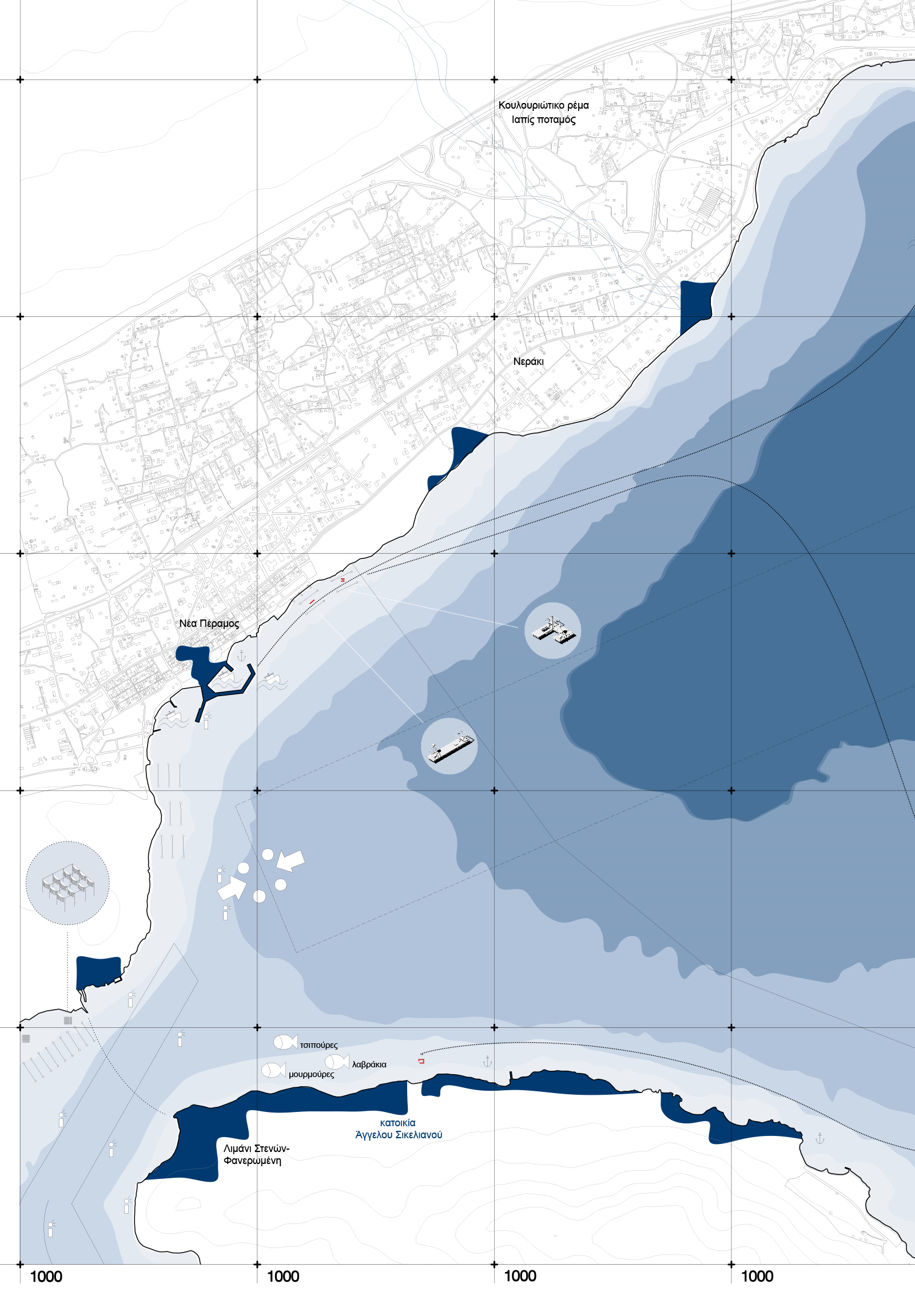 The pollution of the environment was so enormous that led to the perception of a sea that does not create intimacy and constantly becomes a field of controversy.
The pollution of the environment was so enormous that led to the perception of a sea that does not create intimacy and constantly becomes a field of controversy.
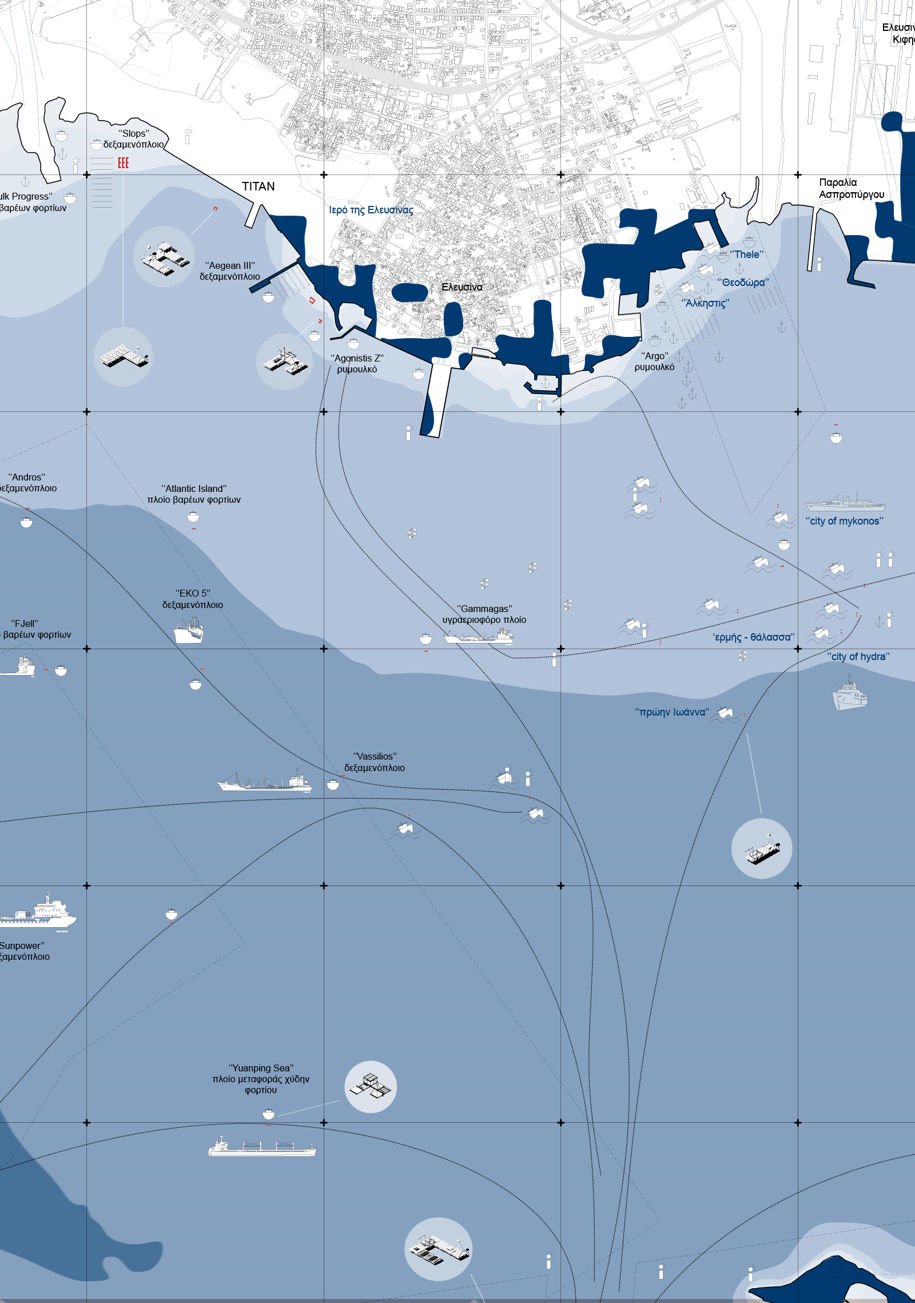
This thesis attempts to identify problematic situations in the Gulf, to make a number of assumptions and appeals of the above, thus ending certain actions that led to the design of the installation.
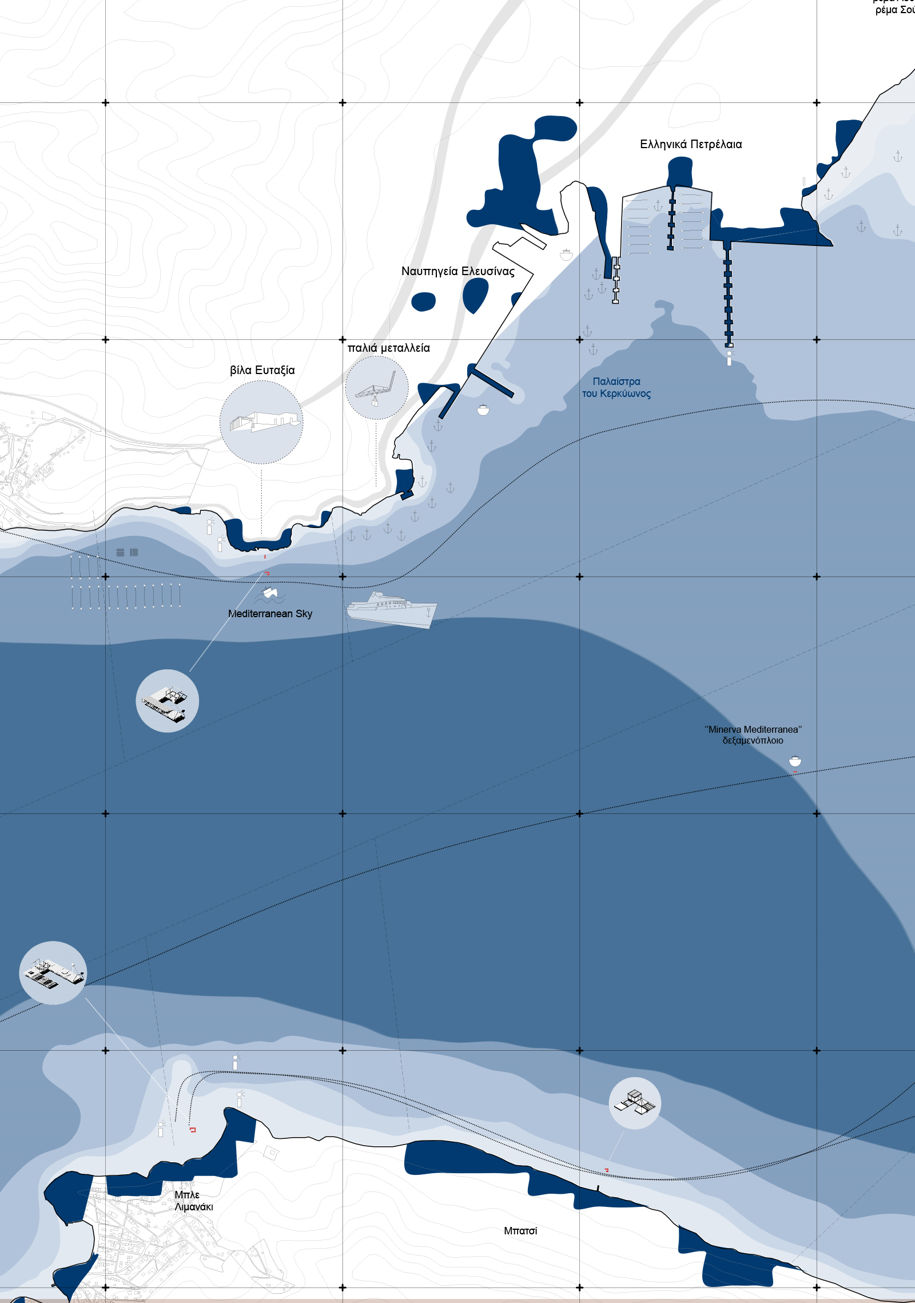
Namely, the problematics are: The huge number of shipwrecks in the bay, the decommissioned ships, the closed seafront of the city of Elefsis, the possibility of sea level rise in cities like Elefsis and Aspropirgos, as well as the pollution of the gulf.
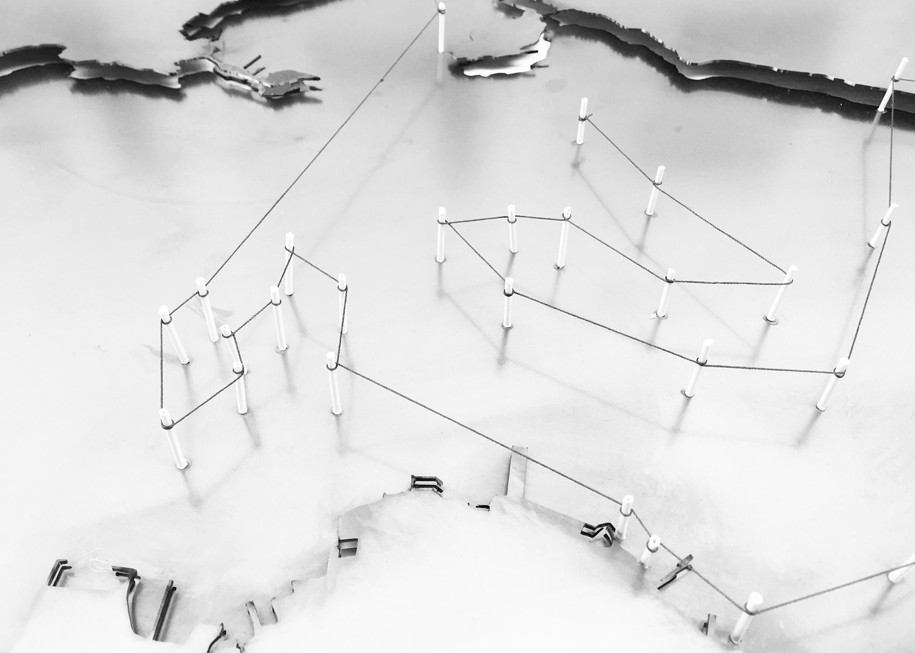
The assumptions and appeals respectively are: Wreck diving and creation of artificial reefs, accessibility and visibility of decommissioned ships, dispersal of the beach, transfer of public uses that will be affected by sea level rise, as well as floating crops and floating photovoltaics.
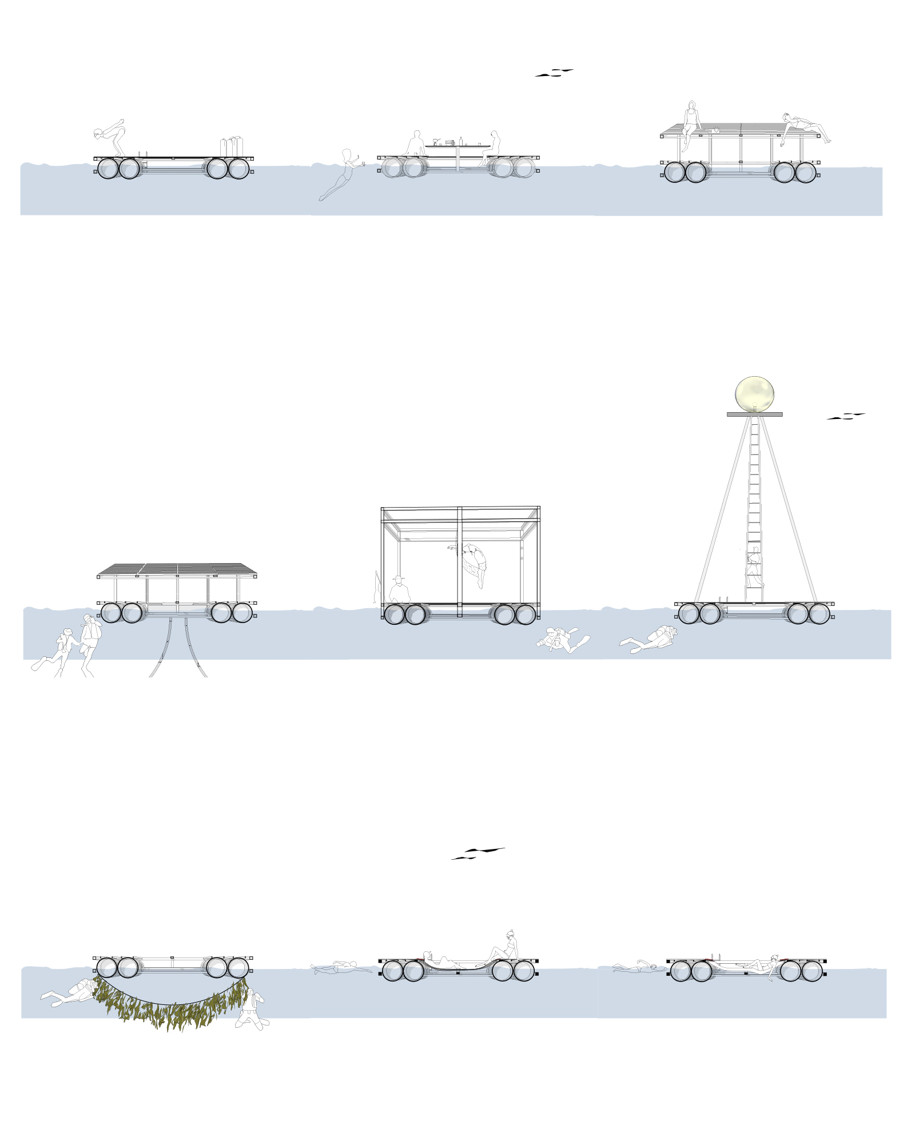
Through a floating installation, the reactivation of the overall activity and productivity of the gulf is attempted.
This allows the inhabitants to return and enjoy the marine life of the area and to exploit the sea for their benefit through alternative ways of producing food, energy and tourism.
In addition, the visitor is given the opportunity to experience a sea different from the typical idyllic mediterranean image he has in mind, to interpret and become a part of it.
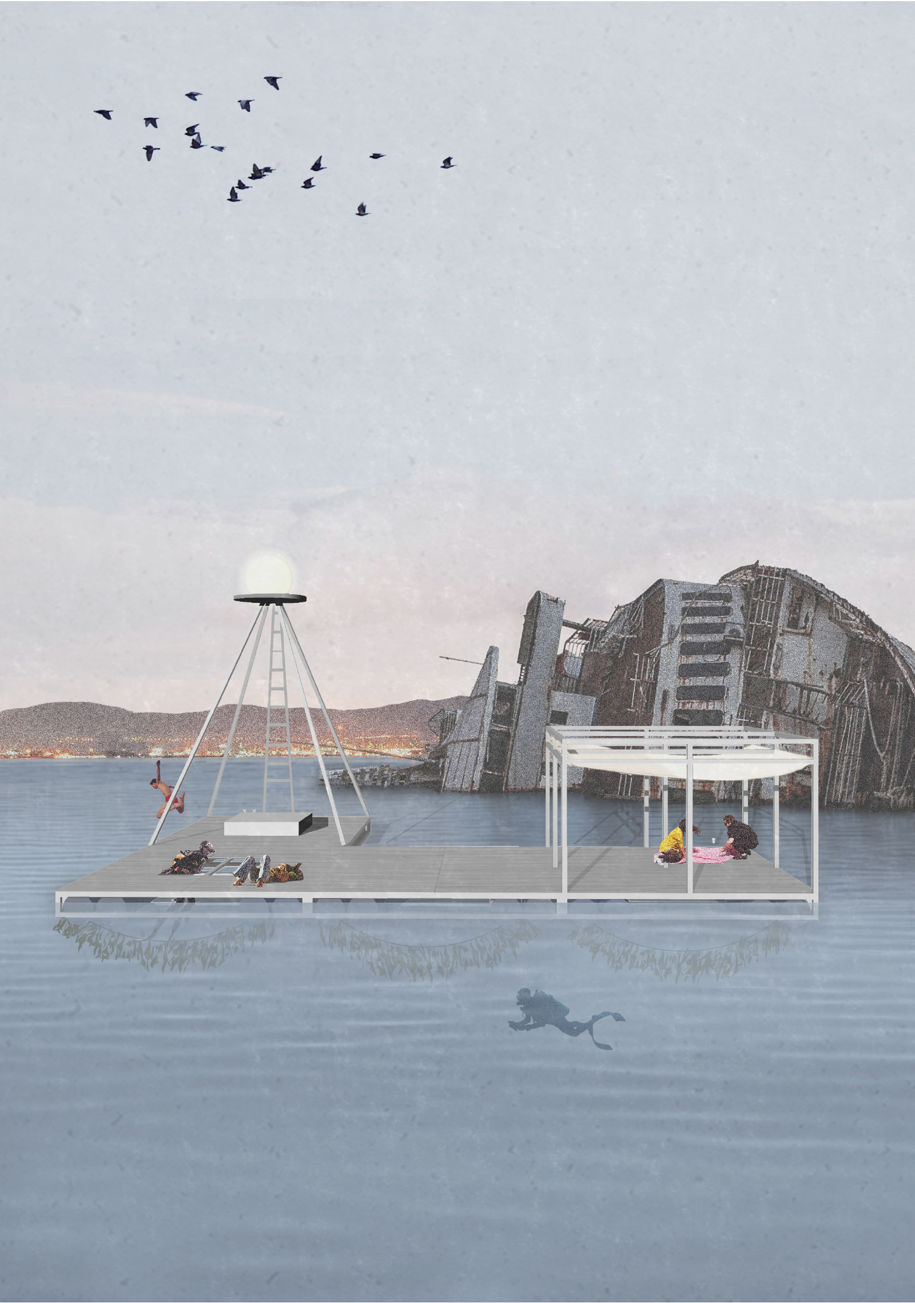
These structures were designed with the logic of the module, that is multiplied in order to be variable in use and also to receive different artificial soils, depending on the area’s need.
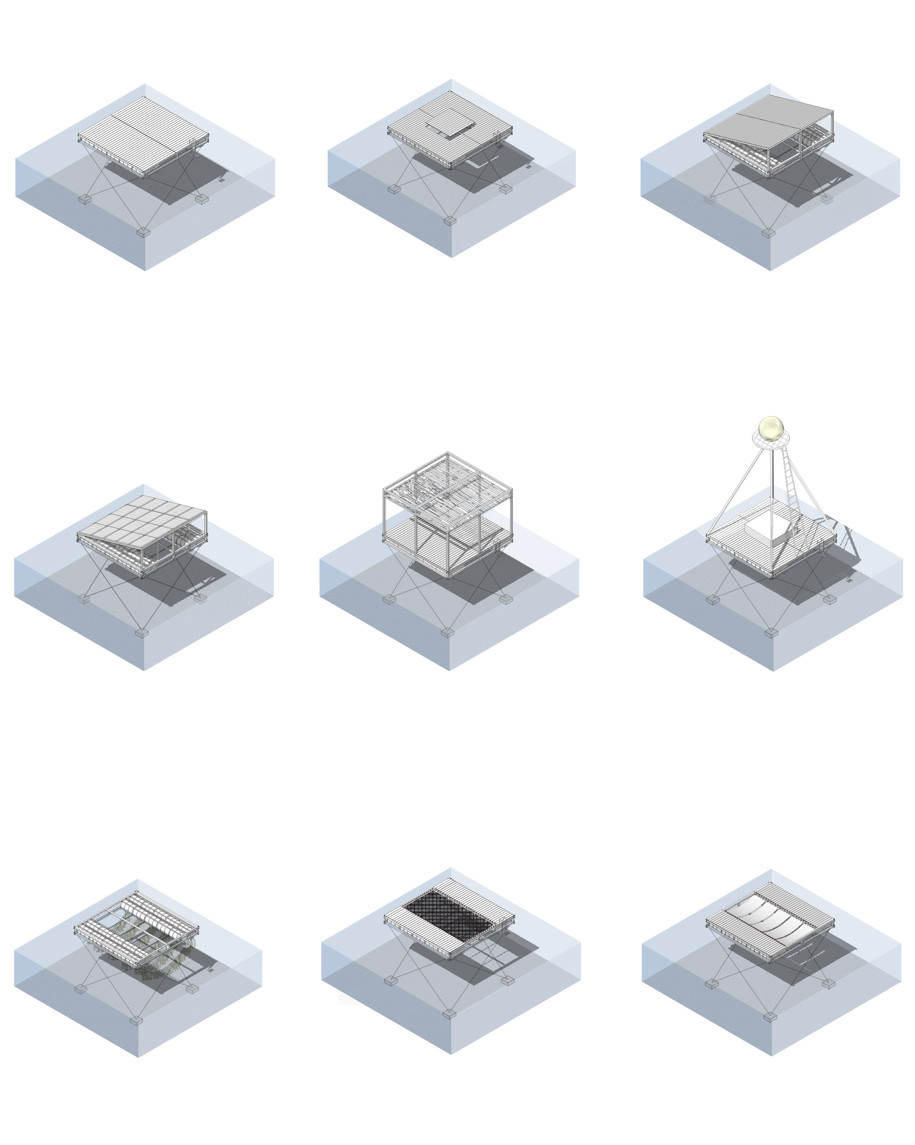
They are located either at locations where many kinds of problems are encountered in an attempt to overturn them, either at historical, architectural and naval points of interest, or near areas which will propably be affected from rising sea levels in the years to come.
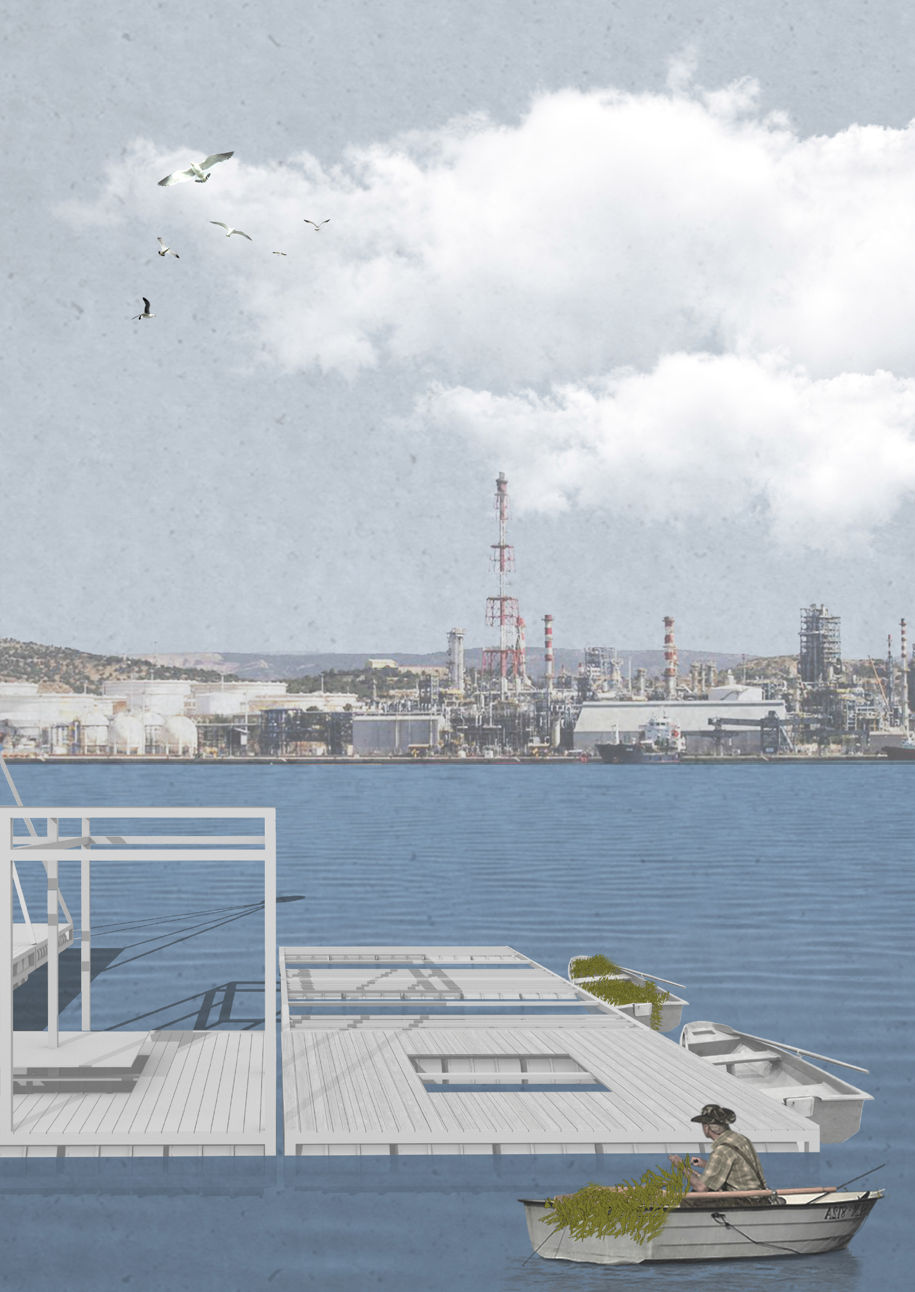
The overall approach focuses on the user’s immediate contact with water during his stay at the artificial ground, in order to confront the strong enforcement that water creates when it encircles an urban use from all its’ sides and separates it from the steady land.
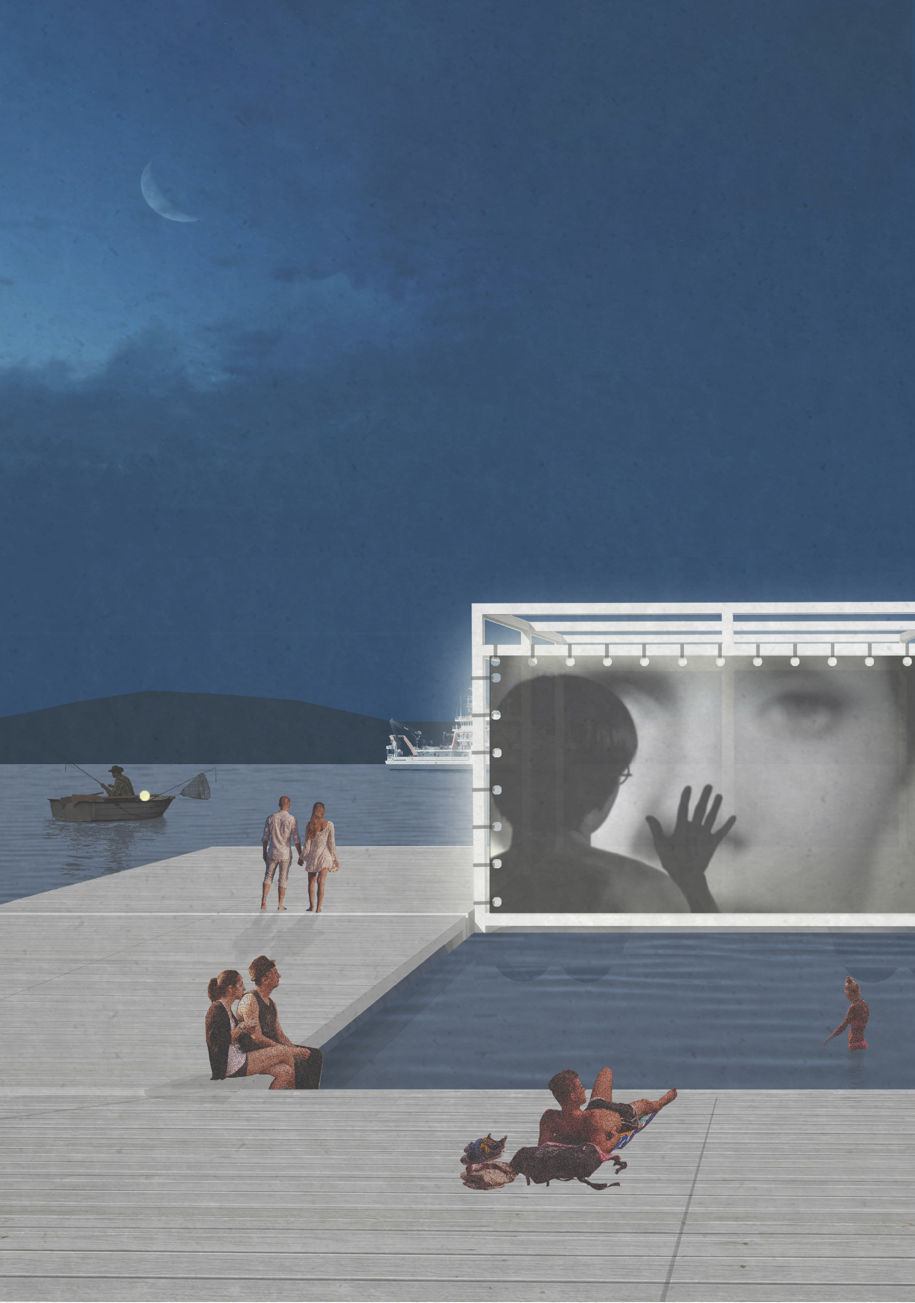
Facts & Credits
Project title Reactivations : an amphibious installation in Eleysis gulf
Student Heidi Kaproulia
Date June 2018
Course Diploma thesis
Supervisor Zissis Kotionis
Institution University of Thessaly, Department of Architecture
Η διπλωματική εργασία της Χάιδως Καπρούλια με τίτλο ‘Επανενεργοποιήσεις : μια αμφίβια εγκατάσταση στον κόλπο της Ελευσίνας’ παρουσιάστηκε τον Ιούνιο του 2018 στο Τμήμα Αρχιτεκτόνων Μηχανικών του Πανεπιστημίου Θεσσαλίας με επιβλέποντα καθηγητή τον Ζήση Κοτιώνη. -κείμενο της δημιουργού
Πώς μπορούμε να αντιμετωπίσουμε τη θάλασσα ως μία νέα τοπογραφία;
Η παρούσα διπλωματική εργασία, μέσα από τη διερεύνηση της τωρινής κατάστασης του κόλπου της Ελευσίνας, επιχειρεί, μέσα από υποθέσεις, αναιρέσεις και ενεργήματα, να επανενεργοποιήσει μέρος της συνολικής δραστηριότητας και της παραγωγικότητας του κόλπου, μέσα από την εγκατάσταση πολλαπλών δράσεων πάνω στη θάλασσα.
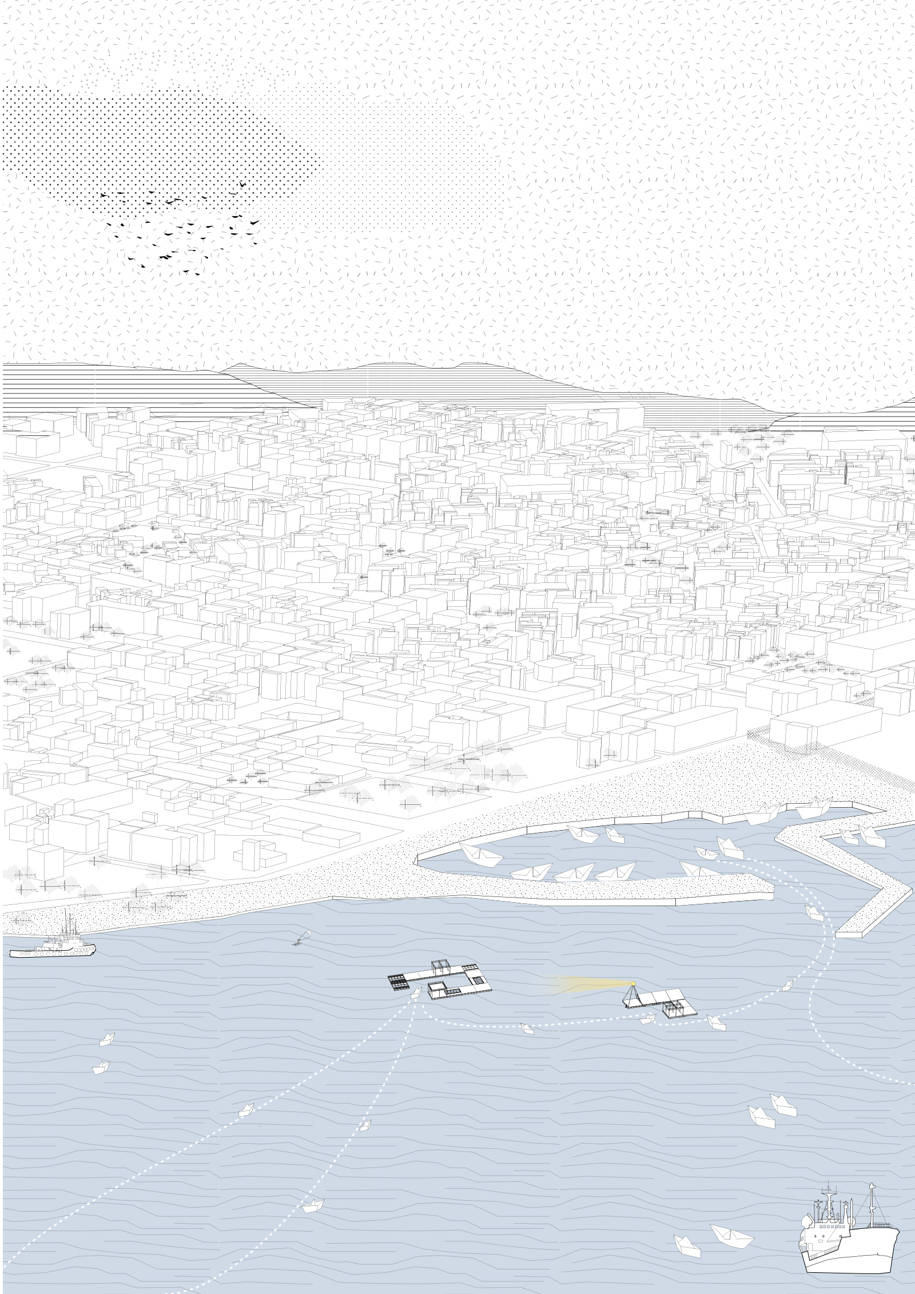
Οι συγκεκριμένες δράσεις έχουν στόχο, τόσο να κάνουν τους κατοίκους να επιστρέψουν στο εδώ και πολλά χρόνια επιβαρυμένο θαλάσσιο οικόπεδο της περιοχής, όσο και να εκμεταλλευτούν τη θάλασσα προς όφελός τους, μέσα από εναλλακτικούς τρόπους παραγωγής τροφής, ενέργειας και τουρισμού.
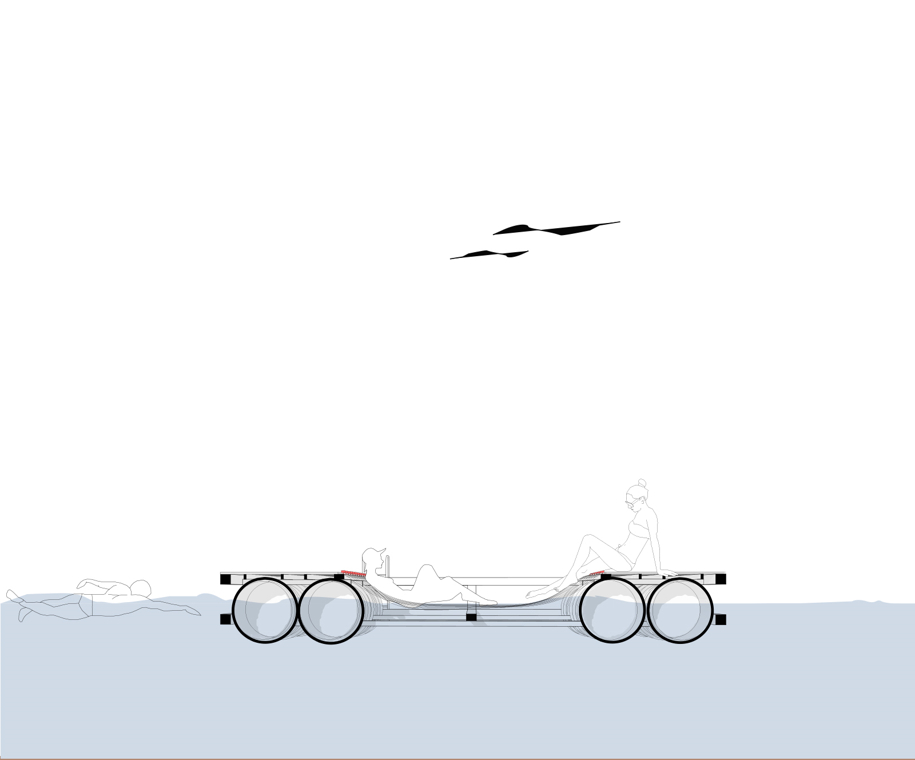
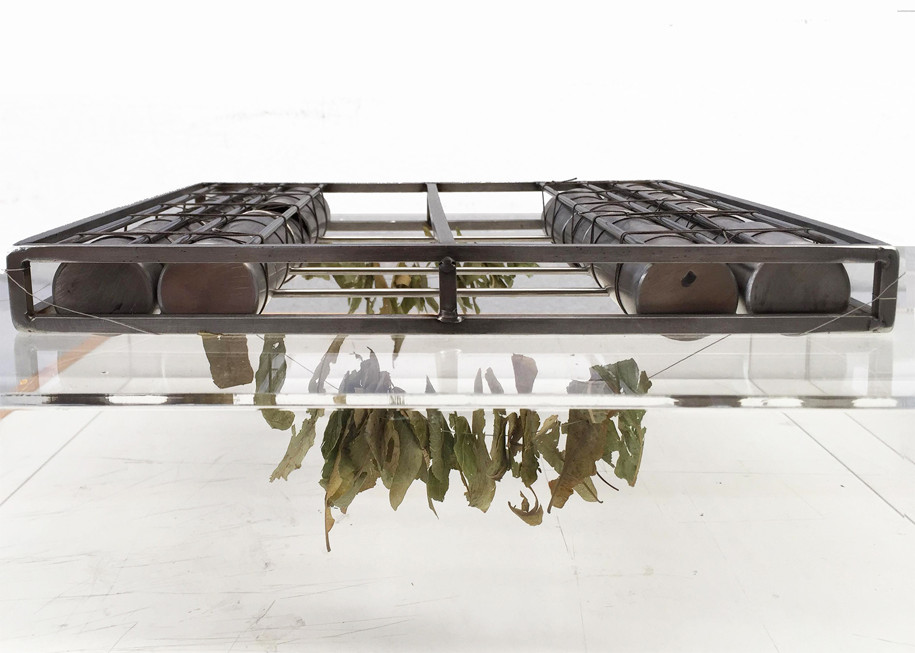
Οι κατασκευές σχεδιάστηκαν με τη λογική της μονάδας που πολλαπλασιάζεται έτσι ώστε να έχουν μεταβλητή χρήση αλλά και να παραλαμβάνουν διαφορετικά τεχνητά εδάφη ανάλογα με την εκάστοτε ανάγκη της περιοχής.
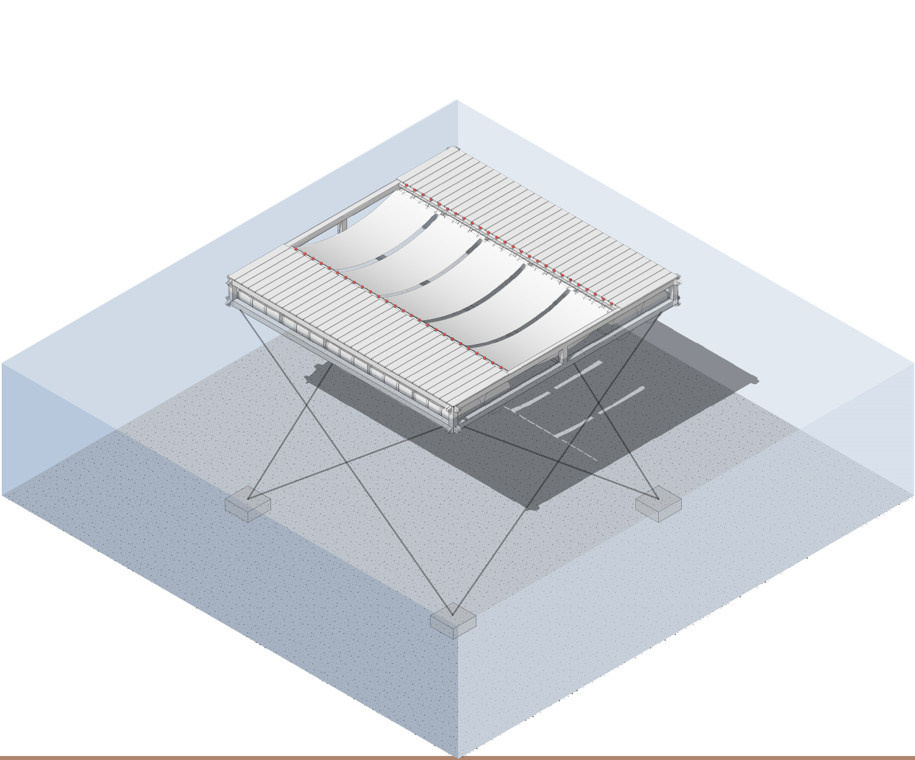
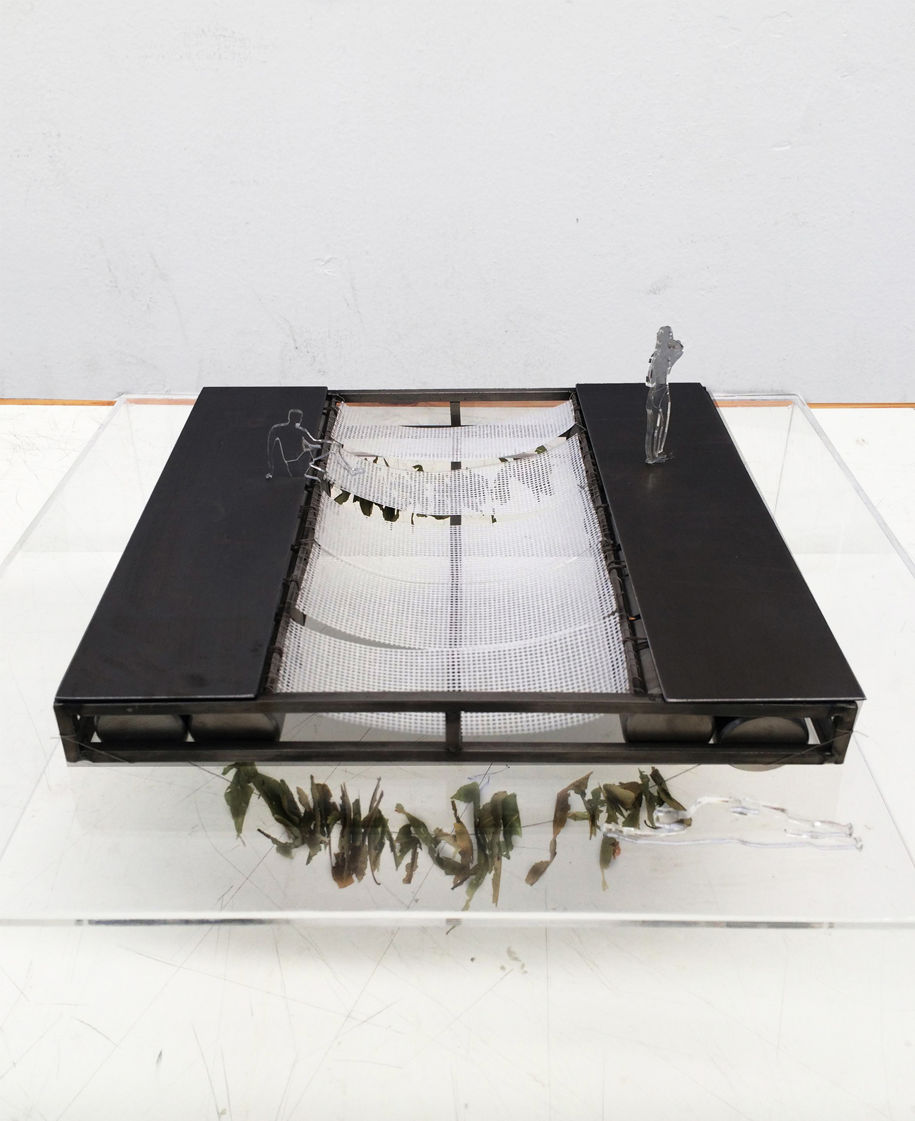
Η τοποθέτηση των κατασκευών γίνεται σε σημεία στα οποία εντοπίζονται πολλών ειδών προβλήματα, σε μία προσπάθεια αναίρεσής τους, είτε σε σημεία ιστορικού, αρχιτεκτονικού και ναυτικού ενδιαφέροντος ή κοντά σε περιοχές στις οποίες εκτιμάται ότι θα πλημμυρίσουν εξαιτίας της ανόδου της στάθμης της θάλασσας τα επόμενα χρόνια.
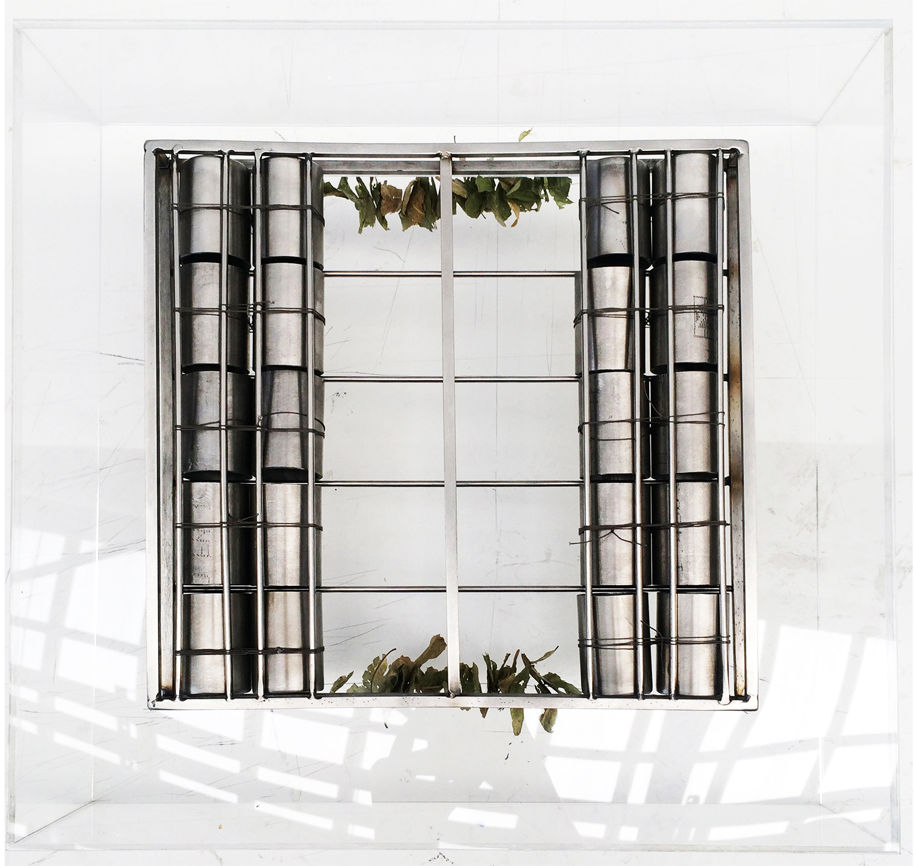
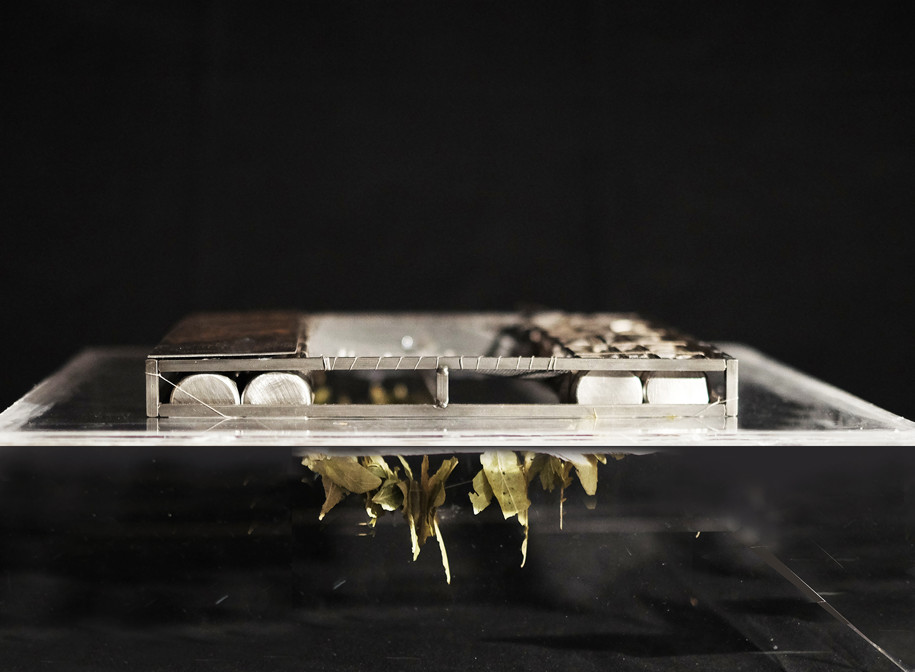
Η συνολική προσέγγιση, εστιάζει στην όσο πιο άμεση επαφή του χρήστη με το νερό, κατά την παραμονή του στις κατασκευές.
Σκοπός της εγκατάστασης είναι ο χρήστης να έρθει αντιμέτωπος με την αίσθηση που απορρεέι από την ισχυρή επιβολή του νερού, όταν αυτό περικυκλώνει μία αστική χρήση από όλες τις πλευρές και τη διαχωρίζει από τη στέρεη γη.
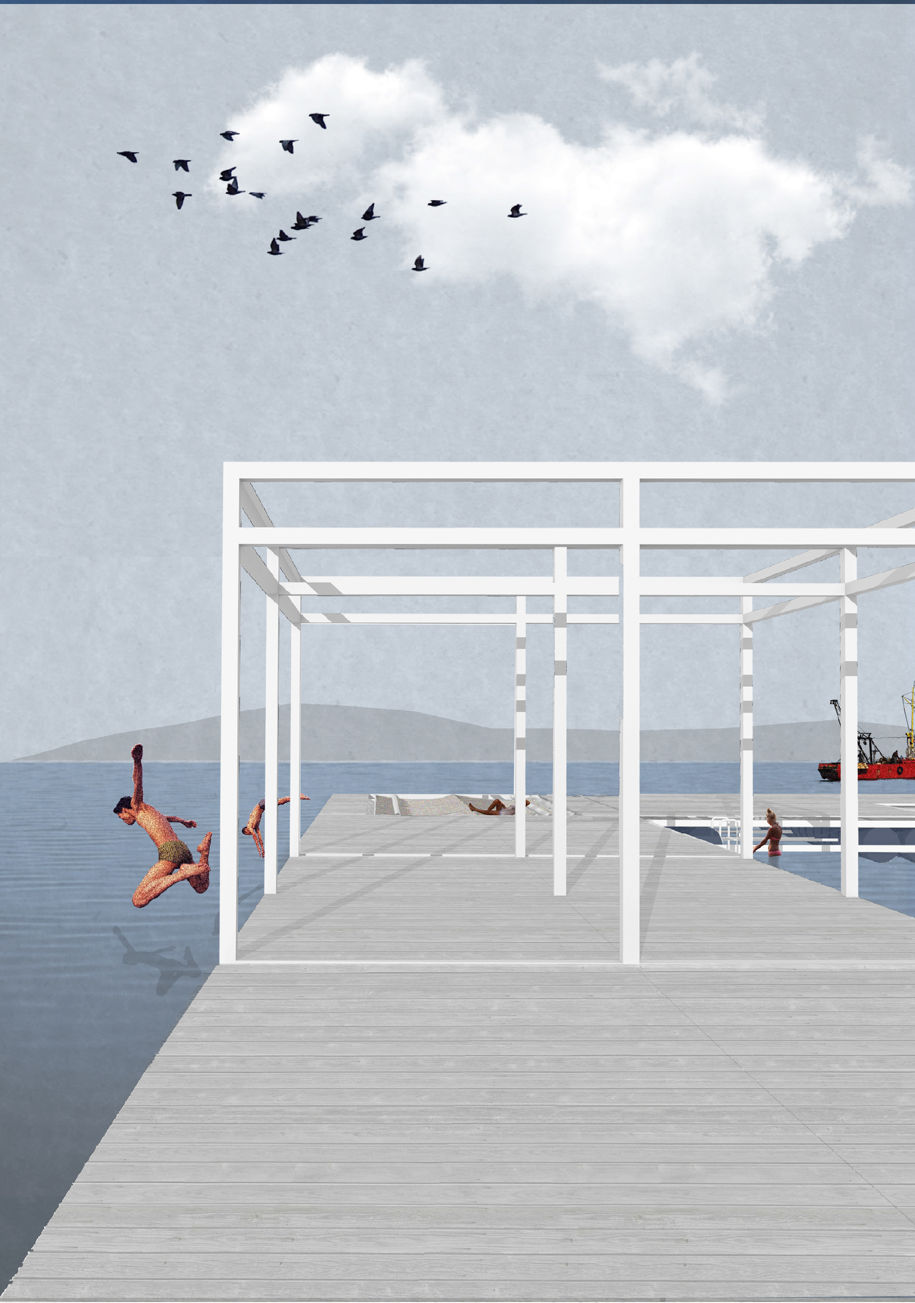
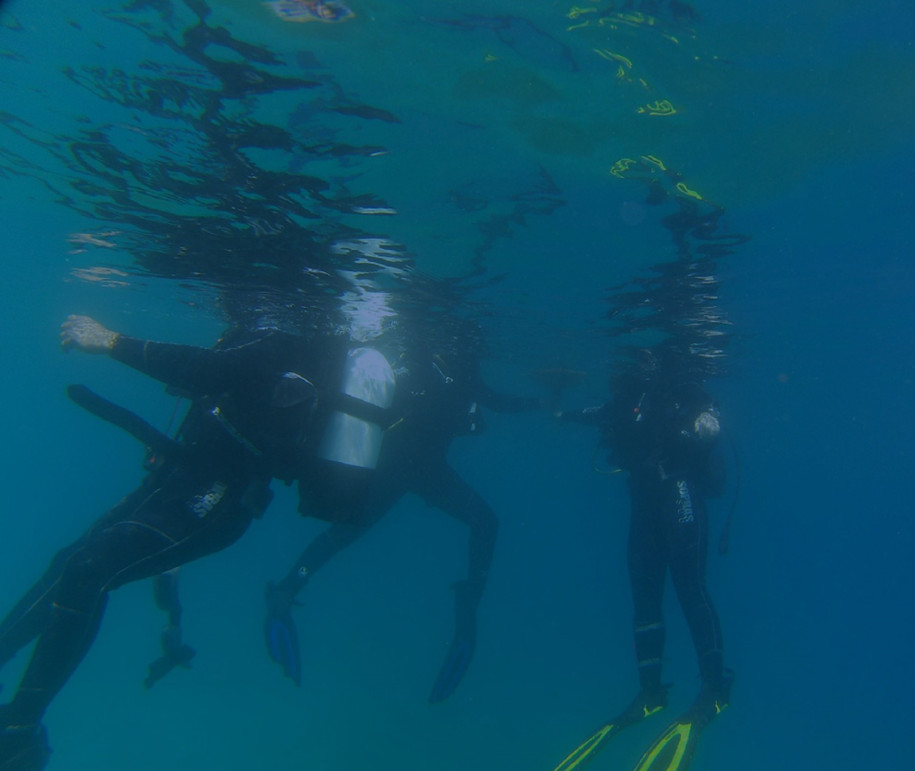
Στοιχεία έργου
Τίτλος εργασίας Επανενεργοποιήσεις : μια αμφίβια εγκατάσταση στον κόλπο της Ελευσίνας
Φοιτήτρια Χάιδω Καπρούλια
Ημερομηνία Ιούνιος 2018
Μάθημα Διπλωματική εργασία
Επιβλέπων καθηγητής Ζήσης Κοτιώνης
Σχολή Πανεπιστήμιο Θεσσαλίας, Τμήμα Αρχιτεκτόνων Μηχανικών
browse through student projects on Archisearch here!
–
δείτε περισσότερες εργασίες φοιτητών εδώ!
READ ALSO: Zephyr | Master Thesis by Stavros Mavrakis